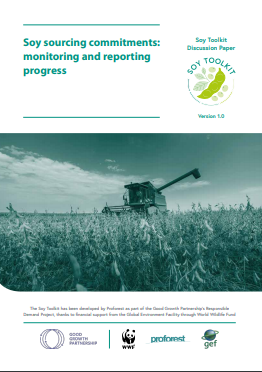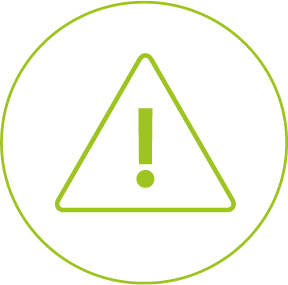Element 5: Monitor, verify and report on progress
Monitoring, verifying and reporting, both internally and externally, doesn’t only allow to track progress and review goals and strategies, but also increases transparency in a sustainable soy supply chain. This strengthens credibility and accountability for commitments and implementation.
The successful implementation of policy commitments, such as no deforestation or respect of human rights, can be facilitated or jeopardised by the quality and effectiveness of the monitoring and reporting processes in place.
You will find below 6 key steps for achieving successful implementation.
1. Define the purpose and scope of your commitments
The first step in monitoring is to define what will be monitored and what the monitoring is expected to deliver. To do so, buying companies need to consider their position in the soy supply chain, for example, as responsibilities will vary at each point of the supply chain.
Upstream companies will be able to collect information directly from producers, and will have more influence to ensure policy implementation at farm-level. Downstream companies can monitor progress via suppliers using surveys or remote sensing tools.
2. set your kpis
Key Performance Indicators (KPIs) can be developed from the data monitored to capture the progress and outputs of policy implementation. They should cover all the key environmental and social commitments.
3. design your monitoring system
Decide how to monitor and specify the indicators and sources.
Decide who is going to gather data, analyse and produce KPIs.
Consider what your suppliers are monitoring/could monitor.
Define how the monitoring data will influence practice, provide transparency and allow accountability.
Decide how often the monitoring needs to be conducted.
4. how to monitor progress
Upstream companies: Two main types of monitoring approaches can be useful: geospatial monitoring and non-geospatial monitoring.
Downstream companies: For companies that are removed from the production base, the most practical approaches to start with can be supplier surveys or scorecards, which can then evolve to geospatial monitoring of priority sourcing buffers.
5. Report internally and take action
Internal reporting will depend on what needs to be communicated externally and the policy goals.
6. Report externally and enhance transparency
It is essential to be open and transparent with a wide range of stakeholders about any issues that have been identified. Acknowledging that issues exist, demonstrating the process of remediation and being transparent about progress in relation to commitments are crucial.
Key points
When implementing soy sourcing policies, it is crucial to monitor and report on progress both internally and externally, not only to track progress and review goals and strategies, but also to make the process transparent to different stakeholders.
There are ongoing discussions amongst upstream and downstream companies on how to track and report on progress and, therefore, this paper aims at supporting such discussions but is not a consolidated guide.
Ultimately, monitoring and reporting should be aligned across the supply chain, so that roles and types of support at the different stages of the supply chain are clear and companies can benefit from their direct suppliers’ efforts and data.
Learn more in Briefing note 5: Monitoring and reporting progress.








